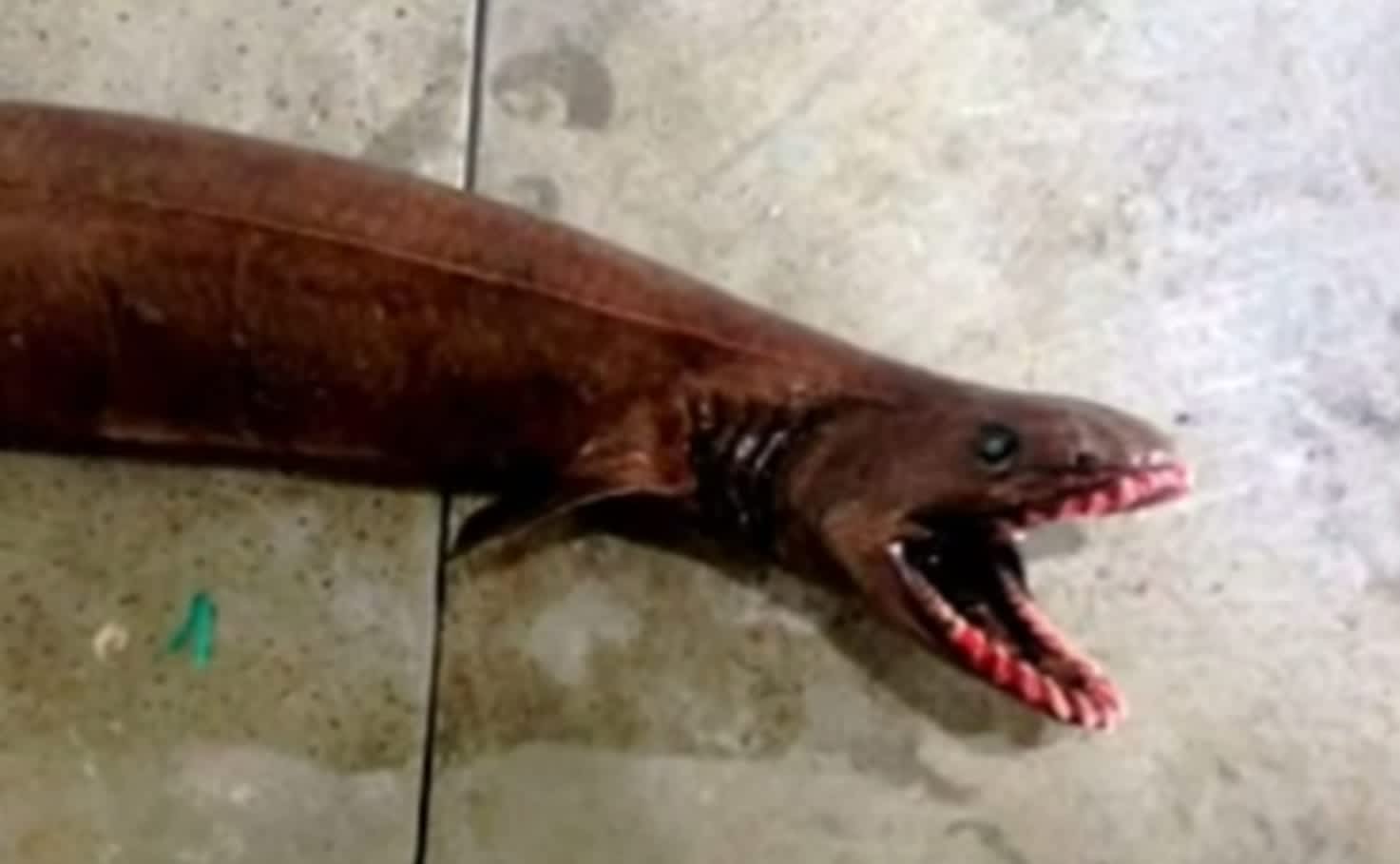“Living Fossil” Shark Captured in Australia
OutdoorHub Reporters 01.22.15

Commercial fishermen off the coast of Australia have captured a rarely seen frilled shark, a species so primitive that it is often referred to as a “living fossil.” According to CNN, the 5-foot shark was captured at a depth of 1,100 meters in southwestern Australia by David Guillot. The fish was still alive when Guillot pulled it to the surface, but quickly expired.
“I’ve been fishing 30 years and never saw anything like it. So I brought it in,” he told CNN. “Honestly, we thought we had caught a brand new species, maybe discovered something wild.”
Fishermen often get strange and unusual bycatch when trawling deep waters, but the South East Trawl Fishing Industry Association (SETFIA) says that frilled sharks are especially rare.
“The frilled shark (Chlamydoselachusanguineus) gains its name from its six pairs of frill-like gills,” the organization stated on its website. “It is one of two remaining species of this ancient family which dates back 80 million years.”
In the modern day, frilled sharks can be found scattered across the Atlantic and Pacific Oceans and can live up to a depth of 5,000 feet below the surface. Judging by its shape, the creature looks more like an eel than a shark, and is believed to have been misidentified as mythical sea serpents in the past. Its long jaws are filled with up to 300 tiny teeth, which the shark uses to snag soft-bodied squid and other deep water denizens. Frilled sharks are not considered commercially valuable and are usually only caught as bycatch, although some researchers interested in the species have also captured specimens for study. From those observations experts say that frilled sharks are relatively slow swimmers and lack the crushing bite of larger sharks. To make up for this, the frilled shark is able to open its jaws wider and can consume prey up to half its size in one swallow.
Anglers and swimmers have little to worry from this fish however. There have been no documented injuries caused by a frilled shark, save for perhaps researchers nicking themselves on the creature’s sharp teeth.
Guillot, who has kept the fish, says he plans on donating it to a museum.
“The head on it was like something out of a horror movie. It was quite horrific looking,” he told 3AW Radio.
You can see images of the frilled shark below:
http://youtu.be/FqE6SevZRjY

